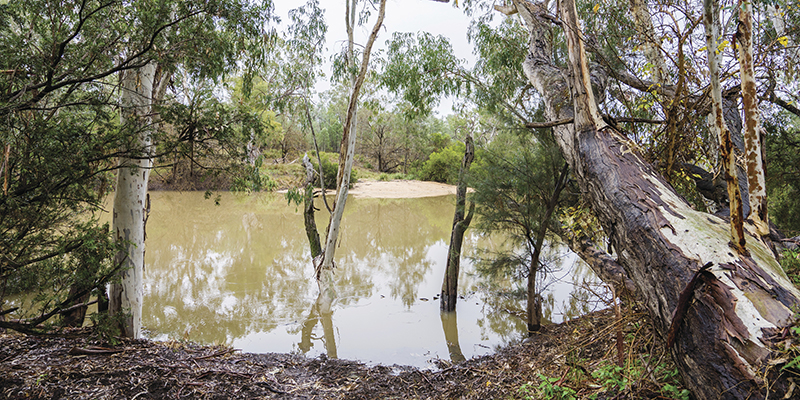A smarter water future for the Border Rivers
The NSW Government has launched the Border Rivers Regional Water Strategy to deliver healthier, more reliable, and resilient water resources for the next 20 years.
The NSW Department of Planning and Environment’s Executive Director Water Strategy and Policy Kaia Hodge said the strategy provides a shortlist of solutions that will safeguard existing water resources and enable the region to be in a stronger position to meet the challenges of a changing climate.
“Local communities across the Border Rivers felt the full impacts of the 2017-2020 drought with many waterways ceasing to flow, towns experiencing years of water restrictions, our ecosystems being stressed and agriculture and economic production declining,” Ms Hodge said.
“This is not a scenario we want to see again which is why we need to do more with less water, make smarter decisions about our water use and management and protect the region’s most critical water needs.
“The strategy outlines a more sustainable approach to managing surface and ground water for residents, businesses, farmers, First Nations people and the environment which is home to a rich and diverse range of ecosystems, water-dependent plants, native fish and nationally significant wetlands.
“We want the Border Rivers region to remain a place where people want to live, work and play, both now and in the future, which is why improving water security is vital.”
The strategy brings together the best and latest climate modelling and data to identify the key water challenges the region needs to tackle over the coming decades, as well as the actions that will put the Border Rivers on the front foot when it comes to managing the increased pressures on water resources.
It sets out 21 actions to address the critical water needs of the region including:
- Aboriginal people – giving First Nations communities greater participation in water management, introducing local initiatives to improve cultural outcomes and providing increased business opportunities for Aboriginal people.
- Industry, community and sustainability – increasing information on water availability, improving water modelling, increasing investment in climate adaption, providing clarity and certainty for water users, landholders and environmental water manager during river drought operations, improving border collaboration and preparing for a more diversified economy.
- Make water for the environment go further – coordinating flows for the environment and irrigation, introducing fish passages, and identifying fish drought refuges, removing physical barriers to delivery of water and rehabilitating priority areas.
- Floodplains – implementing floodplain harvesting reforms, remediating unapproved floodplain structures.
- Water security for towns – investigating viable groundwater sources and innovative projects to support town water supply.
- Groundwater – reviewing groundwater extraction limits.
- Barwon Darling – investigating options to improve connectivity with the Barwon-Darling River system at important times, such as during the first flush of water after drought.
“Getting the balance right means understanding the stresses on water resources and the environment and recognising the limits and trade-offs,” Ms Hodge said.
“While we may have to make some difficult choices, it is not all doom and gloom because there are also some great opportunities for the region.
“This includes supporting economic diversification, addressing the barriers to water rights of Aboriginal people, enhancing town and on-farm water efficiency, using water more effectively, supporting aquatic and floodplain habitats, and developing alternative water supplies that do not add further pressure on finite resources.”
The Border Rivers Regional Water Strategy has a separate implementation plan that prioritises the delivery of actions over the next three years and outlines the responsibilities and timeframes so they can be monitored and assessed.
The NSW Government will publish a report every year so the community can track the progress of the actions and stay informed.
You can view the strategy and implementation visit: Border Rivers Regional Water Strategy.
